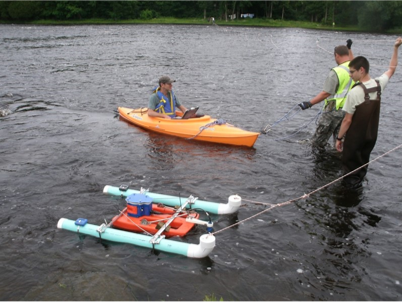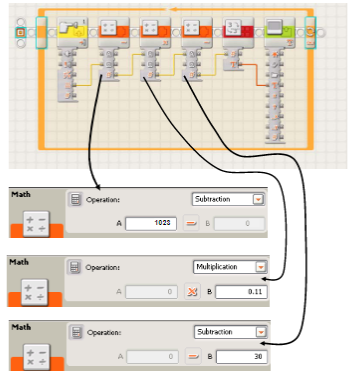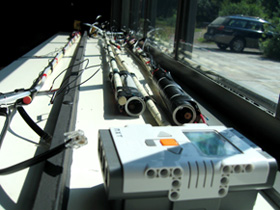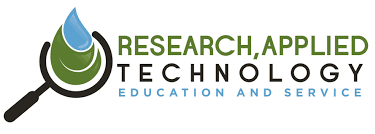Legacy
Past Programs
Shoreline Environmental Research Facility (SERF)
The Shoreline Environmental Research Facility (SERF) research strategies are aligned with those of national significance. Specifically, SERF’s programmatic research theme is similar to that proposed by the National Science Foundation (NSF), entitled “Collaborative Large-Scale Engineering Analysis Network for Environmental Research”, or CLEANER. CLEANER is an initiative for collaborative research to support adaptive and sustainable environmental management, with the ultimate objective of facilitating a dynamic network for national and international coastal margins research and policy-making. SERF stresses sensor development, deployment, and applications for data collection (both geo-referenced fine-scale spatial surveys and fixed-point time series), information synthesis, and analysis for integrative predictive whole coastal ecosystem modeling based on in-situ continuous, periodic, and episodic monitoring.



Water Analysis, Training, Education and Research Services (WATERS)
The Water Analysis, Training, Education and Research Services analytical laboratory was established as a cooperative partnership between Western Kentucky University, Mammoth Cave National Park, the City of Bowling Green, and various local municipalities, and water, wastewater and stormwater utilities. By delegating personnel, equipment and other resources into a shared service entity, each partner is able to avail itself of the combined capacity of the overall WATERS infrastructure, the scope of which would have been otherwise out of reach. This “Farmers Cooperative” laboratory serves a combined capacity development and regulatory compliance mission by further providing a technician training and certification platform.
Water Training Institute
The Water Training Institute was established to address the nationwide workforce shortfall of qualified treatment plant operators due to factors including the en masse retirement of baby boomers and the tightening of regulatory requirements regarding the hands-on experience required prior to licensure. A Hybrid Experiential and Distance Learning Educational Model (HEDLEM) is used to target rural areas hardest hit due to the lack of educational and experiential opportunities available to them within a reasonable proximity. A blue-collar equivalent to the Service Core Of Retired Executives (SCORE), Encourage Every Young Operator with Retired Experience (EEYORE) provides mentoring for new recruits, while a Utility Network (UNet) was established to provide experiential locations. Strategically located Community and Technical College partners provide the regional instructional delivery, allowing for both succession planning and career advancement through the combined provision of both academic credits and state-specific, and state-approved, certification and licensing hours.
Selected Past Projects
Sturgeon Spawning Habitat Characterization
St. Lawrence County, NY
Project funded by USEPA (USEPA GL-9722140) through St. Regis Mohawk Tribe. RATES provided monitoring services to characterize hydrodynamics and water quality for known spawning habitats the St. Lawrence River and tributaries. Data was subsequently applied in HEC-RAS to predict water depths and velocities over the studied river reaches.

SENSE IT
Three separate multi-county regions of New York State
The Student Enabled Network of Sensors for the Environment using Innovative Technology (SENSE IT) was an NSF-funded Innovative Technology Experiences for Students and Teachers (ITEST) project. The projected integrated STEM skills into a robust interdisciplinary curricula and teacher development effort by teaching 3,000 high school students to design, build, test, deploy and interpret their own environmental sensors.


